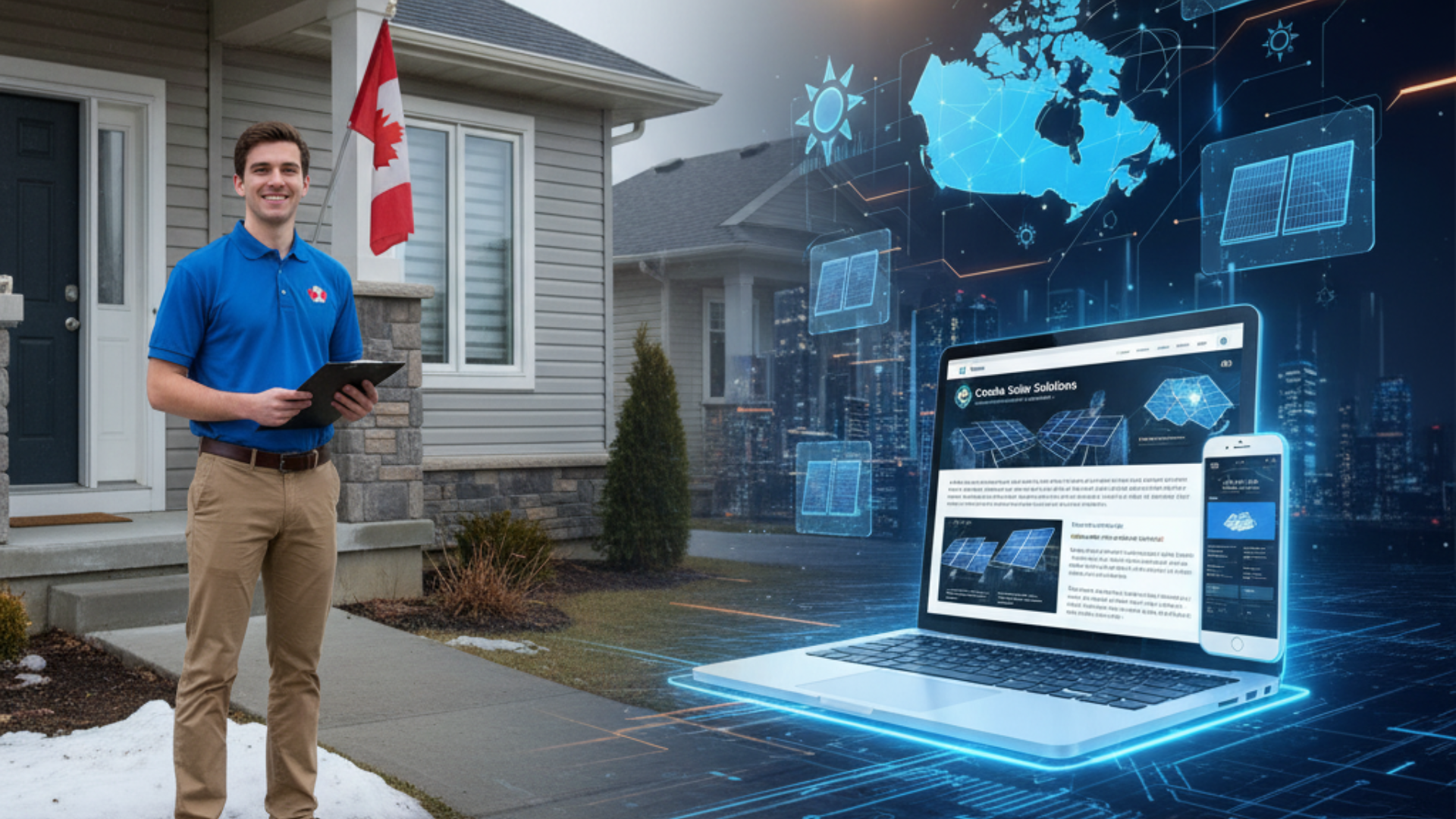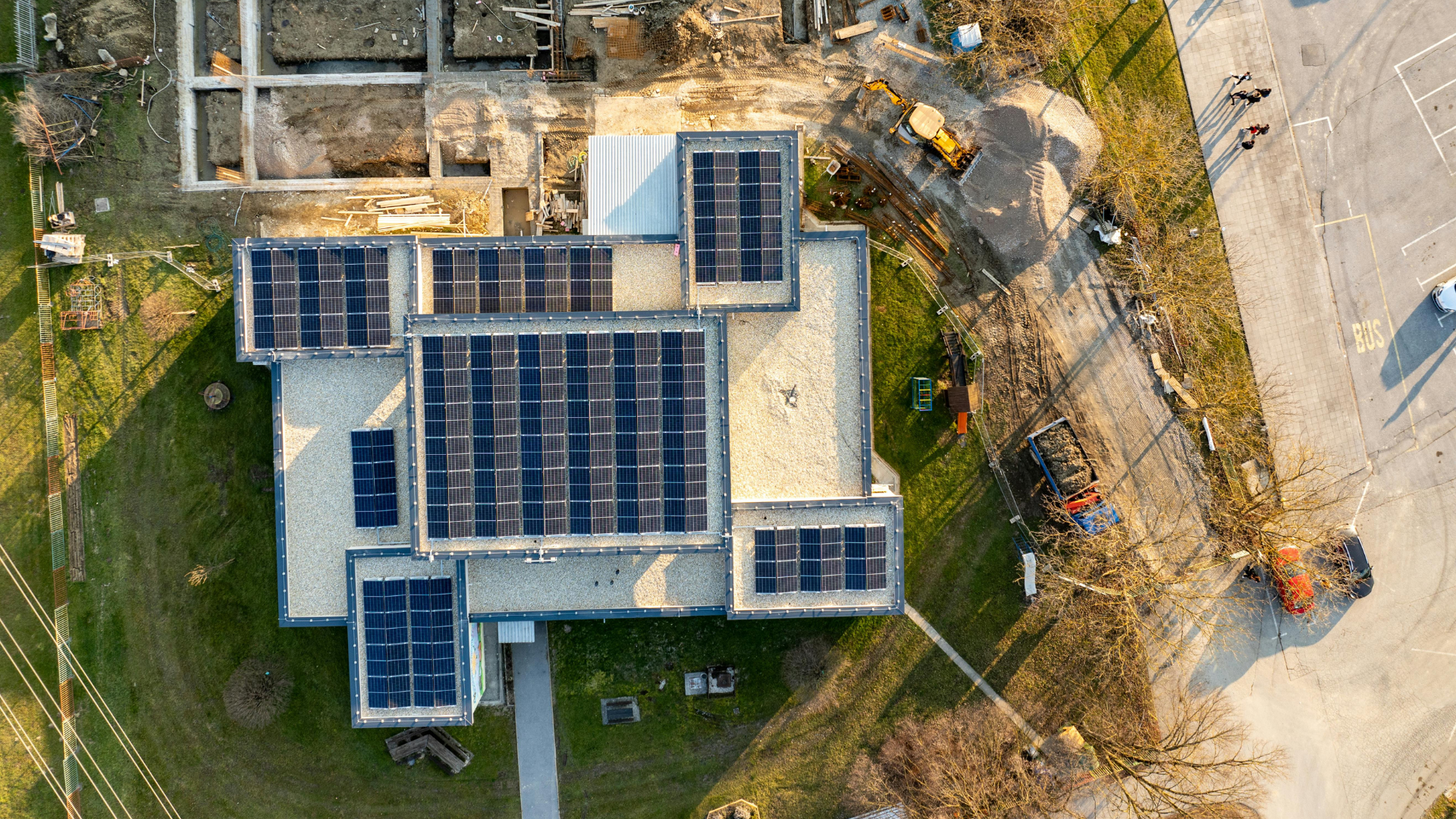September 9, 2024
Steve Jobs, the co-founder of Apple, once said, "Design is not just what it looks like and feels like. Design is how it works."
Similarly, solar design software plays an important role in ensuring that solar installations not only look good but also perform optimally. However, project managers may find it difficult to provide their best work due to the intricacy of solar design, which frequently results in mistakes, inefficiencies, and delays.
This is where solar design software comes into the picture, an innovative tool that allows project managers to streamline their workflow, improve accuracy, and increase work efficiency.
Let's explore how solar design software can transform the way project managers work, and why it's a must-have tool for anyone trying to succeed in the solar sector.
Key takeaways
- Using solar design software helps cut down on the time and work needed to produce complex layouts for solar systems.
- Accurate estimations of system sizing and energy production are guaranteed by advanced capabilities like performance modeling and 3D visualization.
- Project managers can make well-informed decisions and maximize project outcomes with the help of data-driven insights from the software.
- It can increase the overall efficiency of a project by automating operations and decreasing manual labor.
- Early detection of possible problems in the design process can assist in avoiding expensive errors and delays.
- Software for solar design can help stakeholders and team members collaborate and stay on the same page.
- Project managers can improve client satisfaction by offering accurate and tailored solar solutions.
Understanding the Solar Design Software
Solar design software is a specialized tool that allows solar professionals to design, simulate, and assess solar energy systems.
Its main objective is to ensure that photovoltaic (PV) systems are designed with effectiveness, affordability, and regulatory compliance by streamlining the design process.
Various professionals such as solar engineers, installers, and sales teams can use solar design software. It makes it possible for them to work together efficiently and create precise designs that meet client's needs.
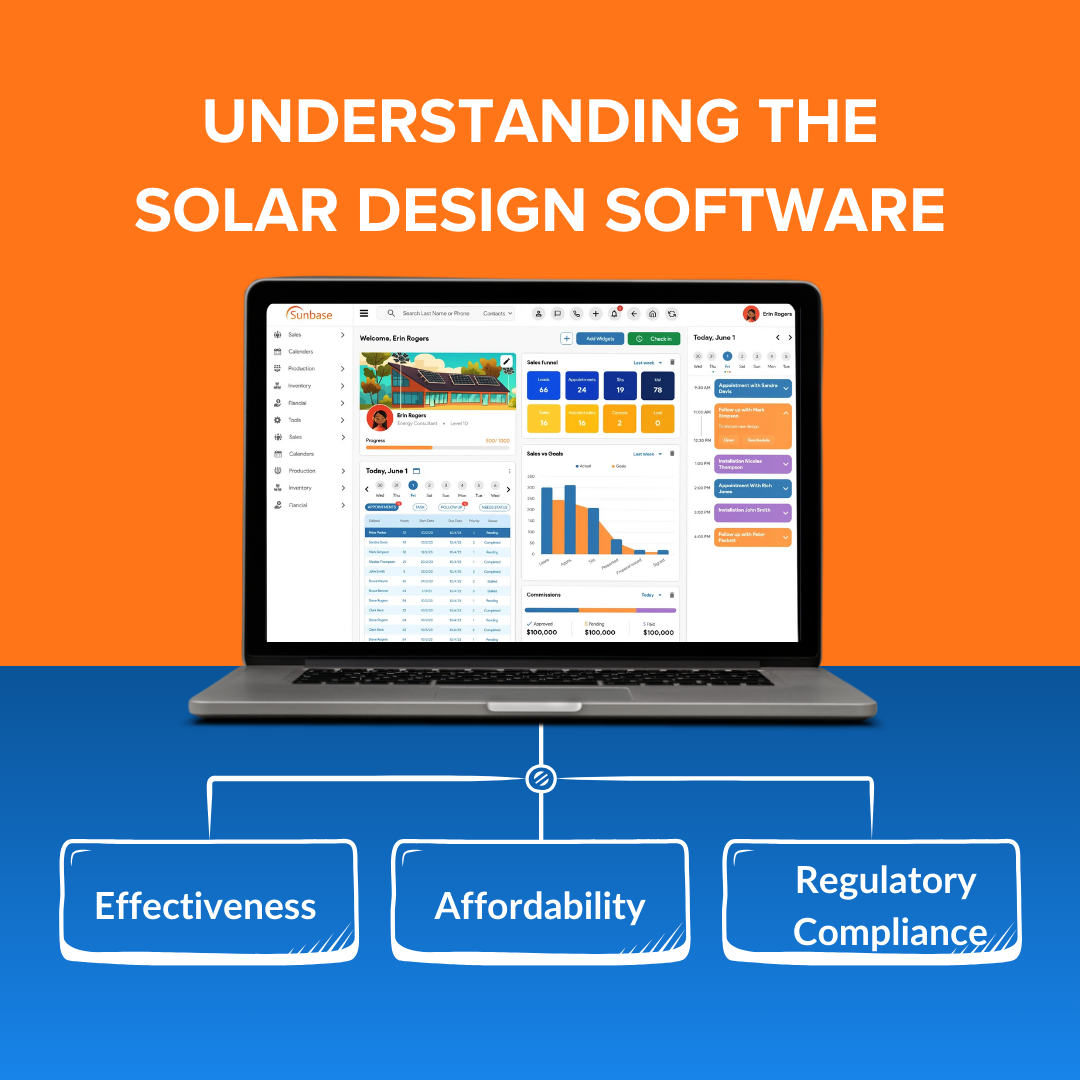
Market Growth:
From 2022 to 2027, the global market for solar energy is anticipated to expand at a compound annual growth rate (CAGR) of almost 20.5%. This surge highlights the expanding reliance on solar design software to handle the growing number of solar projects.
About 70% of solar installers report that their productivity and client contacts have greatly improved due to utilizing design software.
Research indicates that the adoption of solar design software can result in a 30% reduction in project design time. This improved efficiency enables solar companies to take on more projects while maintaining quality.
To explore the most popular options in the market, Read our blog: Solar Design Software Showdown: Comparing the Top Players in the Market
Choosing the Right Solar Design Software
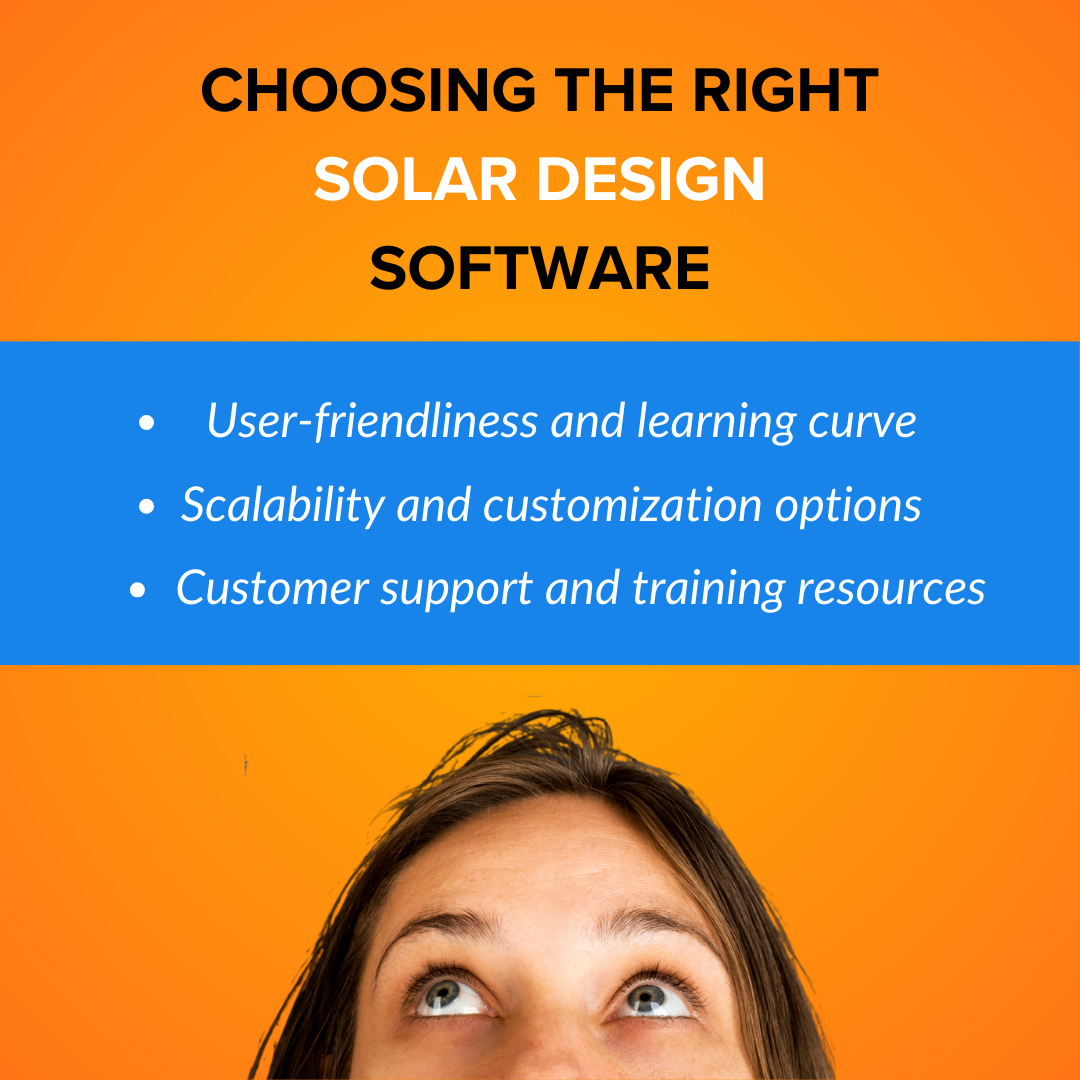
Let's take a look at an example first.
Noah a solar project manager, was designing a big commercial solar array using traditional design approaches. He devoted hours to creating a comprehensive plan, but unfortunately, he failed to consider a crucial shading problem that would have a big influence on energy output.
Problem:
The shading issue isn't identified until the installation is finished, resulting in:
Reduced energy production by 15%, additional costs to reconfigure the array, and above everything else project delay.
Solution:
Using solar design software like Sunbase, Noah can:
Identify potential shading issues early in the design process, Automatically generate shading reports, optimize the design to minimize shading effects, and easily collaborate with team members to review and approve changes
But with so many choices, knowing what matters most in making your decision will have a big impact on your capacity to create outstanding PV designs and raise the output of your sales team.
1. User-friendliness and learning curve
User-friendliness is an important factor when assessing solar software.
Your team's learning curve can be greatly shortened with an intuitive and simple-to-use software system. This is especially crucial in the solar business, since many team members may lack substantial technical experience.
2. Scalability and customization options
Your software requirements may vary as your solar business grows.
Selecting scalable and customizable solar design software guarantees that it will be able to expand along with your company. This is critical for managing large commercial solar projects or adjusting to changing market demands.
3. Customer support and training resources
Having strong customer service and training materials will be necessary when implementing new solar design software.
Your team's ability to use the product efficiently can be significantly enhanced by having access to thorough documentation, tutorials, and helpful customer service.
For example, Sunbase makes sure customers can quickly learn how to draft solar proposals and efficiently manage their projects by providing a range of training materials. Being dedicated to customer assistance enables businesses to make the best use of the software, resulting in better project outcomes.
Related: Top 5 Fears of Solar Customers and Their Solar Solutions
How does Sunbase support project managers in solar design?
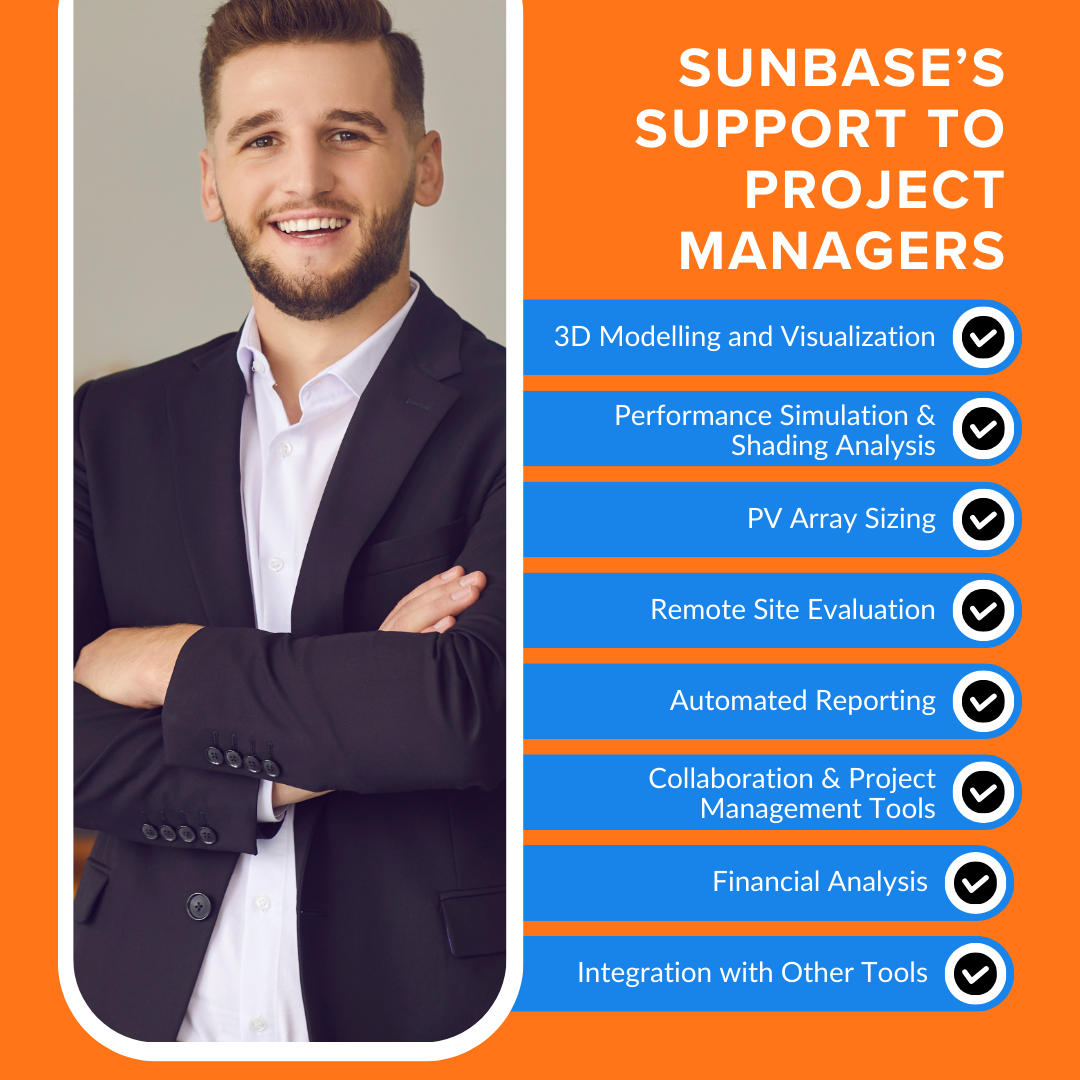
Sunbase allows teams to generate exceptional PV designs by combining innovative features that ensure maximized energy production and efficiency. Here's how Sunbase helps project managers with various aspects of solar design.
1. 3D Modelling and Visualization
With Sunbase's comprehensive 3D modeling tools, project managers can see solar panel installations and layouts in a realistic setting.
This feature assists in determining the optimal spatial arrangement of solar panels on rooftops or ground-mounted systems, ensuring that energy production is at its highest while aesthetic and structural issues are also taken into account.
Project managers can use 3D visualization to show clients with clear and compelling designs, which improves the proposal process.
2. Performance Simulation and Shading Analysis
Project managers can use Sunbase to run performance simulations and forecast a solar system's performance under numerous conditions.
The software has capabilities for shadowing analysis that assesses the potential effects of surrounding trees or structures, roof orientation, shading, and local climate conditions on the efficiency of solar panels.
Project managers can modify designs to maximize energy output and guarantee that the solar panels obtain the maximum amount of sunlight exposure throughout the day by comprehending potential shading concerns.
3. PV Array Sizing
Another important issue that Sunbase addresses is the size of PV arrays. The software precisely determines the ideal solar array size based on regional laws and patterns of energy usage, making sure the solar system is neither oversized nor undersized.
Through the input of particular factors like roof pitch, panel orientation, and available space, Sunbase makes the process of sizing PV arrays simpler for project managers.
It can save a lot of time to perform calculations manually because the program determines the ideal solar array size required to fulfill the client's energy needs. Precise sizing improves performance and can help in giving clients accurate cost estimates, which in turn affects their power bill savings.
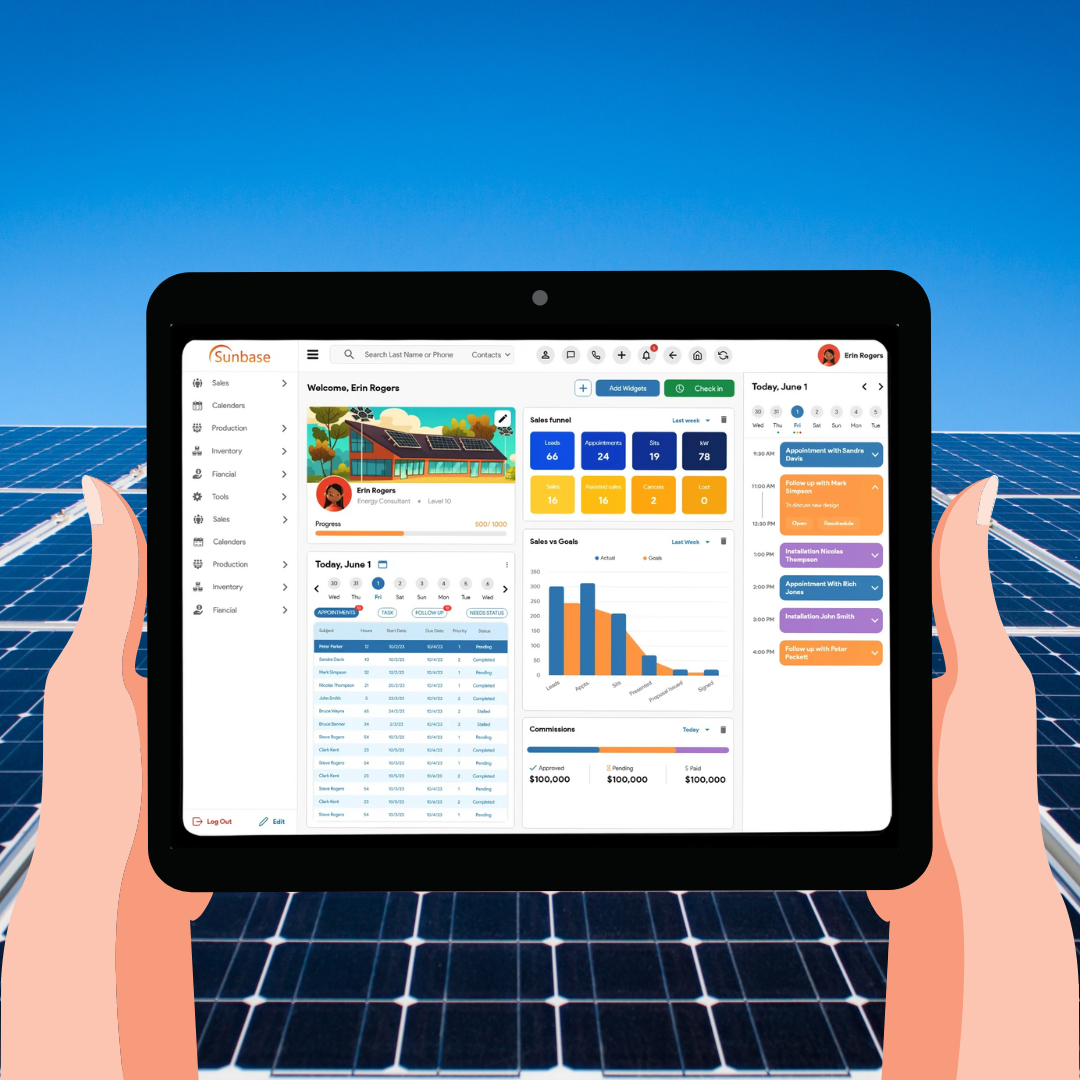
4. Remote Site Evaluation
Project managers can evaluate possible locations for solar installations remotely with Sunbase's capabilities, eliminating the need for them to be on-site.
In addition to guaranteeing that the location is suitable for solar energy generation, this saves time and resources.
This capability is especially useful for solar enterprises with multiple locations because it allows for faster assessments and decision-making. Remote evaluations can involve satellite photos and site data, offering a thorough analysis of the site's suitability for solar installation.
5. Automated Reporting
With only a few clicks, project managers may generate comprehensive reports on system performance, financial analysis, and project status with the software's automation of the reporting process.
This automation ensures that stakeholders receive correct and timely data. Project managers can use reports to convey convincing facts to clients and investors by including energy output projections, cost breakdowns, and return on investment (ROI) calculations.
6. Collaboration and Project Management Tools
Sunbase has collaboration tools to improve communication between clients, contractors, and project teams.
To make sure that everyone is on the same page, project managers may communicate plans, changes, and reports instantly. The unified platform lowers the possibility of misunderstandings and delays by streamlining project management responsibilities like scheduling and resource allocation.
7. Financial Analysis
To assist project managers in determining the financial feasibility of solar projects, Sunbase also offers strong financial analysis tools.
Sunbase provides financial analysis tools for project managers to create persuasive proposals and make well-informed decisions. The tools compute energy savings, return on investment, project costs, funding possibilities, and potential electric bill savings for clients.
Through the analysis of these variables, project managers can provide more precise and visually appealing solar proposals that emphasize the long-term advantages of solar energy investments.
8. Integration with Other Tools
Sunbase integrates smoothly with other solar software and solutions, including CRM, project management apps, and Aurora Solar.
This integration enables project managers to link workflows, manage leads, and monitor project progress all in one location. Sunbase improves operational efficiency by reducing the need for various software solutions, ensuring that project managers have easy access to all relevant data.
Read our blog to learn more about The need for seamless integration between solar panels and roofing materials: How can solar technology at Sunbase facilitate integration?
In a nutshell

There are many obstacles in the way of a sustainable future, but project managers can confidently negotiate these complexities if they have the correct tools at their fingertips.
Project managers are working in a completely new way with the help of solar design software, which makes it simple for them to design solar systems that function well. This technology is advancing the solar sector through improving teamwork, minimizing errors, and accelerating the design process.
About Sunbase
Tired of solar design headaches? Design with the best solar design software today!
Learn how Sunbase Solar Design Software can boost efficiency and accuracy!
FAQ's
Q1. Does Sunbase support remote site evaluations?
Ans - Yes, Sunbase has remote site evaluation capabilities, which allow project managers to analyze potential installation sites without having to be personally there. This functionality is very helpful for businesses that operate from multiple locations.
Q2. What features make Sunbase one of the best solar design software options?
Ans - Sunbase stands out for its comprehensive capability, which includes 3D modeling, performance simulation, automated reporting, and financial analysis. Professionals in the solar industry highly recommend it because of its user-friendly interface and capacity to manage residential and business projects.
Q3. Is Sunbase suitable for small, medium, or large-scale solar projects?
Ans - Yes, Sunbase is scalable and can handle projects of any size, from residential to commercial to utility-scale.
I agree to receive marketing messaging from Sunbase at the phone number provided above. I understand data rates will apply, and can reply STOP to OPT OUT.


